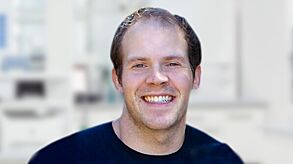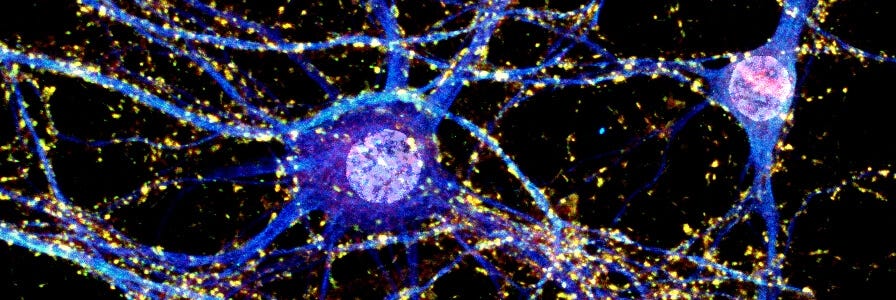Dr. Kevin Beier describes his research on understanding how experience modulates activity dynamics in neural circuits
Interrogating How Experience Modulates Activity Dynamics in Neural Circuits

Dr. Kevin Beier is an assistant professor at the University of California, Irvine. In 2018, he shared with us a discovery that inspired his own scientific research, and he received a travel award from STEMCELL Technologies to attend a conference of his choice. He chose to attend the 11th FENS Forum of Neuroscience.
The development of a miniaturized microscope that can be used to image neural dynamics inside an awake, active mouse, has revolutionized mammalian biology by enabling the analysis of neural dynamics of defined cell types in real time. We are repeatedly finding that there is more information encoded in individual neural dynamics than one can observe in population-level or activity integrated over time. This technology is becoming increasingly accessible for broader access by the neuroscience community. No doubt that this technology will continue to be instrumental in studying how our brains work in the years to come.
Dr. Kevin Beier, University of California, Irvine, United States
Science moves forward when you share it with the world, so we asked Dr. Beier to share his research, and his experience at FENS 2018.
The Research: Experience Modulates Activity Dynamics in Neural Circuits
Can you tell us about your research?
My research is focused on identifying how experience modulates activity dynamics in neural circuits, both acutely and chronically. I aim to understand the sources of adaptive and maladaptive plasticity that drive normal and pathophysiological behaviors.
What have you found so far?
I have been developing viral-genetic reagents to interrogate the relationship between neural circuit structure/function. In my postdoc, I first showed that different dopamine neuron populations in the ventral midbrain of the mouse have biased inputs depending on the forebrain site where they project. I then found that the spread of the rabies virus, which is commonly used as a method of mapping inputs to defined neural populations, is activity-dependent. I used this observation to map out experience-dependent changes in inputs to dopamine neurons, specifically those induced by a single exposure to a drug of abuse. I found that activity in globus pallidus inputs to dopamine neurons is enhanced after a single exposure to cocaine, and that this increase is necessary for at least two simple forms of cocaine-induced behavioral plasticity, with direct relevance to the development of drug addiction.
What is the significance of your research?
Mapping out structure-function relationships in neural circuits will help us to better understand the normal function of these neuronal ensembles and how they go awry in pathophysiological conditions. The finding of a cocaine-induced enhancement of activity in globus pallidus neurons suggests that we can use unbiased technologies such as the rabies activity screen to rapidly identify causative circuit-level changes that contribute to behavioral adaptation. As the method is generalizable, its utility should extend beyond drug addiction, and should provide a complementary approach to modern neuroscience methods used to interrogate questions related to neural circuit function. In the future, I hope to use this approach as well as others that I am engineering to continue exploring how experiences modulate activity in brain circuits and how those changes contribute to behavioral plasticity.
The Conference: 11th FENS Forum of Neuroscience, Berlin, Germany
Why did you choose to attend FENS 2018?
I wanted to get a better sense of the neuroscience research being conducted in Europe and get the sense of the community. I have frequently attended the annual Society for Neuroscience meetings held in the US, and just last year went to the Japanese Neuroscience Society meeting for the same purpose. It was great to speak at my poster with individuals from each of these societies, as I probably would not have met them otherwise.
Can you tell us about your favorite presentations at the conference?
- Tom Insel gave a thought-provoking talk during the opening night about personalized approaches to neuropsychiatric disorders, and the importance of considering the social ramifications of such technologies.
- Leslie Vosshall’s talk on the neural mechanisms of mosquitos’ host-seeking behavior and aversion to DEET was clearly presented and particularly interesting in light of the public health potential of reducing mosquito-borne diseases.
- Botond Roska is pioneering some amazing work on the retina, including work using induced pluripotent stem cell (iPS) derived human retinal organoids, and gave a superb talk to close out the conference.
How has attending this conference inspired you or affected your current research?
Nothing substantial, but I don't expect conferences to. I go to conferences largely to get the feeling of what is going on—see what people are interested in, which posters attract the most attention, what is the most controversial, etc. I may learn a bit here and there that I can apply down the line to my own research, but I don't go with the intention of it immediately having a considerable impact on my work.
A Word of Advice: Science is a Marathon
What advice do you have for the next generation of scientists?
Science is a marathon, not a sprint. Do what you do because you love what you do. You will fail much more often than you will succeed, and most steps (publication, grant/job applications) involve dealing with direct criticisms from others.
Don't work for the accolades; work for yourself. If those things come, great—make time to enjoy them. But if you find satisfaction in the day to day, you will be much happier.
Related Resources
Cedric Bardy Invented BrainPhys™ for Active Neuronal Cultures
Dr. Cedric Bardy discusses why and how he set out to create a novel neuronal basal medium that supports neuronal growth under brain-like physiological conditions.
BrainPhys™ for Improved Neuronal Function
BrainPhys™ Neuronal Medium is a serum-free neuronal basal medium for the culture of primary neurons and the generation and maturation of human pluripotent stem cell (hPSC)-derived neurons.
Request Pricing
Thank you for your interest in this product. Please provide us with your contact information and your local representative will contact you with a customized quote. Where appropriate, they can also assist you with a(n):
Estimated delivery time for your area
Product sample or exclusive offer
In-lab demonstration




